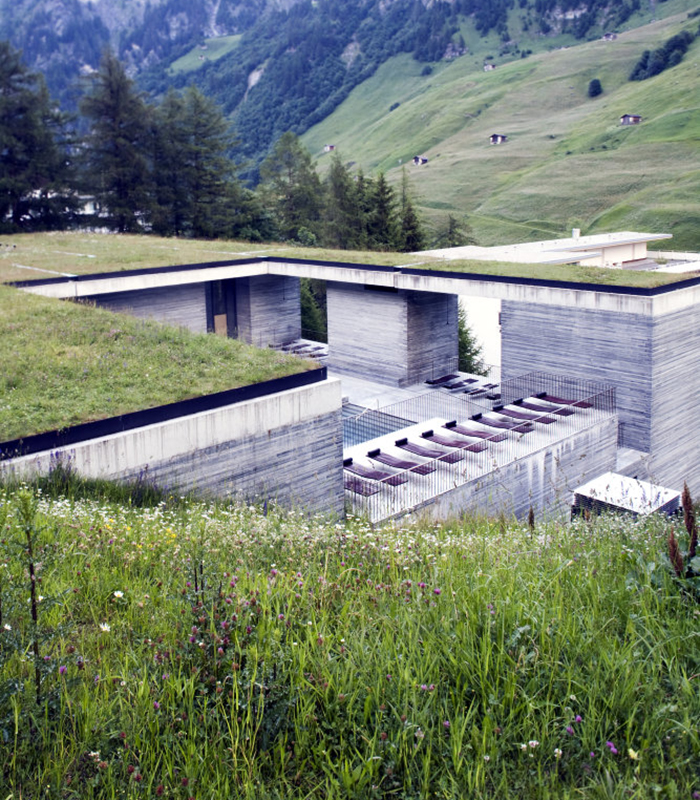Our new V&A+RIBA Architecture Partnership display explores how the practice of bathing and swimming has evolved in the UK through the emergence of baths, spa towns, pools, and lidos. In complement to the exhibition, we cast our eyes further afield to reveal materials from the RIBA Collections that give a fleeting glimpse into a global story of swimming and bathing.
Turkey
Haseki Hurrem Sultan Hamami, Istanbul, designed by Mimar Sinan (1556)
No global picture of bathing would be complete without a hamam. The 16th century Haseki Hurrem Sultan Hamami in contemporary Istanbul was built by the prolific architect Mimar Sinan, and featured a sequence of hot and cold rooms designed for cleansing, spiritual rejuvenation, and relaxation. Separate facilities for men and women are laid out back to back (rather than side by side as was more typical in order to conserve energy). After a long period of closure and use as a storage warehouse, the hamam underwent a restoration to return it to use as a bath house in 2011.
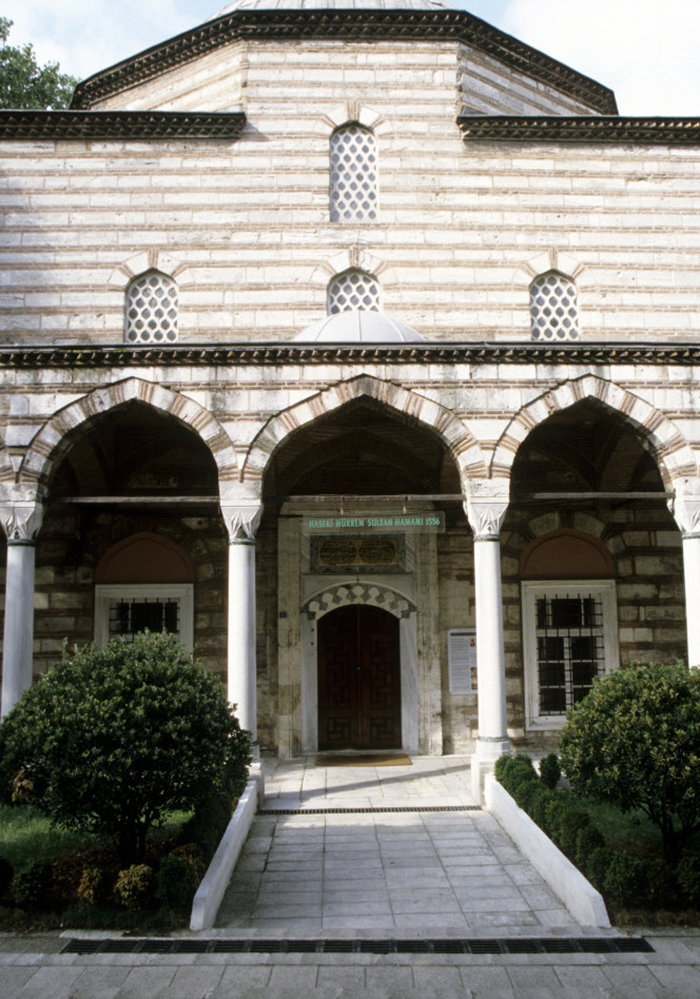
France
Grands Bains Lafayette, Paris (1800s)
“Bains-douches” were a common feature of Parisian life well into the 20th century, with only one in five Paris apartments offering bathing facilities in 1964. When regular bathing became increasingly mainstream in the 1800s, most apartments had been constructed without plumbing. The result was the emergence of public baths like the Grand Bains Lafayette, shown here in a state of dereliction in 1973. A number of public baths and showers still provide facilities to those without access to private baths in Paris today.
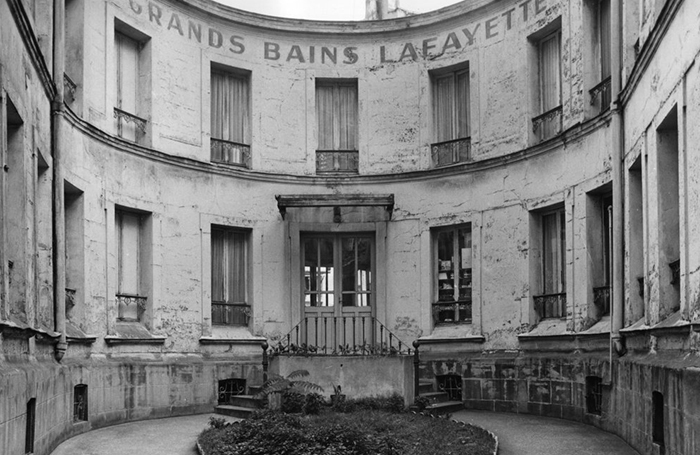
USA
Swimming baths, Maine, designed by Robert Stephen Ayling (1901)
Robert Stephen Ayling was a Scottish architect who began his career as assistant to Charles Barry, best known for his role in rebuilding the Palace of Westminster. Ayling’s own oeuvre was a little more niche. He became the go-to architect for the design of abattoirs, devoting an entire book to the subject: ‘Public abattoirs, their planning, design and equipment’ (1908). However, Ayling’s interest in sanitation also made him well-placed to design public baths. His practice was launched when he won a competition for east London’s Bethnal Green Public Baths, opened in 1898. These were closely followed by a “new swimming bath for workpeople” across the pond in Maine, USA. Baths in this period were mainly built for washing and laundry, and Ayling’s designs were praised for allowing space for prams, in which people often transported their linens.
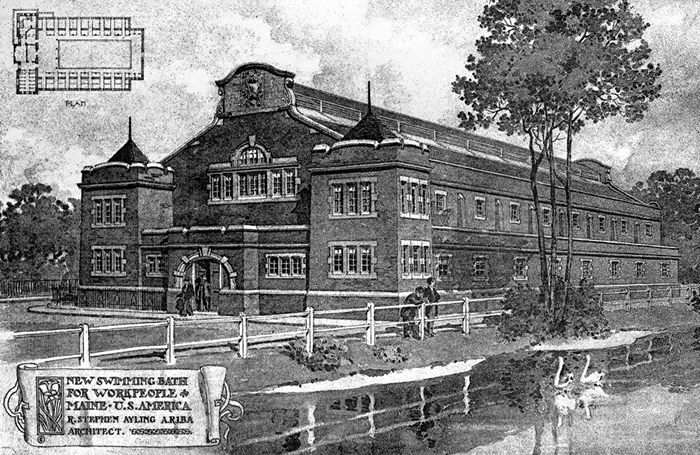
Eritrea
Mingardi pool, Asmara, designed by Arturo Mezzedimi (1945)
The Mingardi pool was built during the Italian colonial occupation of Eritrea, in a period of intense architectural activity resulting in a city now designated a UNESCO World Heritage site as an example of early modernist urbanism. It was one of the first major projects by the Italian architect Arturo Mezzedimi, who later became architect to the Emperor Haile Selassie. The pool was designed in a phased approach that took into account the availability of materials and labour, establishing a social as well as physical relationship to the city. The concrete structure contains a bar and social space as well as the pool, and its clerestory windows and bright palette contribute to an abundance of ventilation, natural light, and colour.
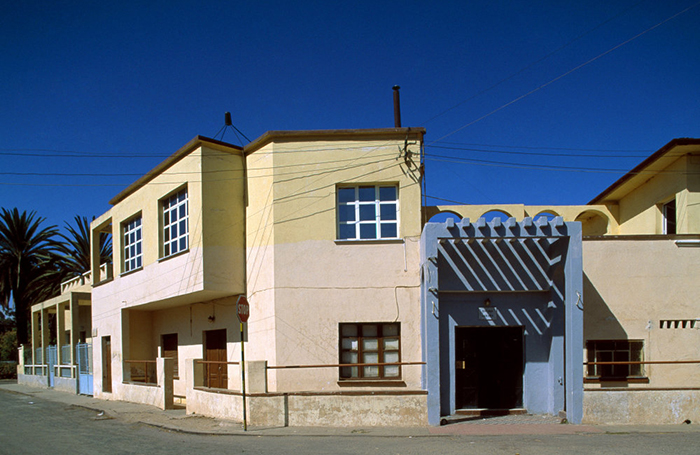
Switzerland
Therme Vals, Graubünden, designed by Peter Zumthor (1996)
In designing the baths nestled in the Alpine village of Vals, Swiss architect Peter Zumthor set out to give physical form to the sensory experience of being “inside the mountain”. The naturally occurring springs at Vals had always been a popular site for bathing, and in the 1960s became home to a “spa centre” and hotel. In the 1980s Zumthor won a competition to replace the existing spa with a new building, but the project became nicknamed the “44-million-project" by locals as a result of its costly and turbulent progression. After the German developer behind it went bust, the Vals community purchased the development, and Zumthor worked up a new scheme that was finally delivered. The result is a raw structure constructed from concrete and local quartzite that protrudes from, and disappears within, its mountainous setting. The spa returned to private ownership in 2012 when it was purchased by an investor.
To dive into examples of baths, pools and spas in the UK, visit our free display at the V&A.
This article was researched using books, periodicals and photographs from the RIBA Collections. Find out more about one of the largest and most diverse architectural collections in the world.
